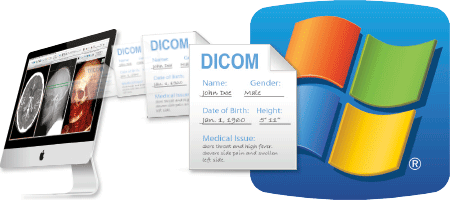This is the second guest post by Marco Treven, M.D. An outside the box thinking physician currently working as a Predoctoral Fellow at the Center for Brain Research in Vienna. His first post was on Efficiency and Effectiveness in Healthcare.
Thinking about the future of medicine can be intimidating at times. There is an accelerating pace of technology and knowledge to keep up with. Big data means that, not only will patients be objectified and quantified, but the doctor’s performance as well. And then you hear about Vinod Khosla predicting that the bottom 80% of doctors will be replaced by algorithms in the near unspecified future.
His statements have caused much criticism. Some arguments concerned human interaction, therapeutic touch and placebo effect, or whether innovation would come from within the field or outside. Also, Khosla did not pick the best examples of what smartphones can already do or will be able to do. Not one of the proliferating mole scanning apps is a diagnostic tool. If anything, they are advertisement for dermatologists. And “Cell phones that (…) take ultrasound images of your heart or abdomen” will probably not be of much use either, unless the owner plans on registering for a sonography course to learn correct positioning. Which, by the way, is hard to do without understanding what you are looking at. However, what personal electronic devices are brilliant for is monitoring, data collection, and even keeping basic homeostasis like blood glucose levels.
In any case, I think this discussion is somewhat besides the point. It’s not about human versus machine. Rather, it’s about the right kind of cooperation, because what humans are excellent at is where computers are weak, and vice versa. Funny enough, high-level reasoning requires very little computation, but low-level sensorimotor skills require enormous computational resources. In other words, while it’s a piece of cake for a toddler to tell faces apart, self-taught face recognition is a gigantic task for a computer. For calculus it’s the other way round. I would argue that “low level sensorimotor skills” are quite important for a useful physical examination, whether its interpreting sounds on auscultation or images on ultrasound. What an impressive robot would it take for a simple knee jerk test, let alone a full neurologic examination?
Even with highly abstract abilities, where computers are already superior, humans are far from being replaced. Take chess playing as an interesting parallel. In 1997, Garry Kasparov lost to Deep Blue, which was quite a big tipping point. One year later, Kasparov introduced a new type of chess where humans and computers play in teams, rather than competing against each other, called Advanced Chess. Kasparov writes in a 2010 article:
“Having a computer partner also meant never having to worry about making a tactical blunder. The computer could project the consequences of each move we considered, pointing out possible outcomes and countermoves we might otherwise have missed. With that taken care of for us, we could concentrate on strategic planning instead of spending so much time on calculations. Human creativity was even more paramount under these conditions.”
That sounds like something nice to have for everyday medical care.
Particularly striking, in a 2005 tournament of Freestyle Chess, which is a form of Advanced Chess, two amateurs with a few laptops outperformed a supercomputer and a grandmaster. Why? Garry Kasparov speculated that the reason was a superior process, meaning less friction in the interaction of human and machine: “Weak human + machine + better process was superior to a strong computer alone and, more remarkably, superior to a strong human + machine + inferior process.”
In his talk “The rise of human-computer cooperation“, Shyam Sankar apparently refers to that same article by Kasparov. In addition, he points to a paper from 1960 by the computer scientist and internet pioneer J.C.R. Licklider, who thought of human computer symbiosis as intelligence augmentation (IA), and never felt that humans might be replaced by computers: “Men will set the goals, formulate the hypotheses, determine the criteria, and perform the evaluations. Computing machines will do the routinizable work that must be done to prepare the way for insights and decisions in technical and scientific thinking.”
In a medical context, clinical decision making must bridge the so called inferential gap between the limited information available, and the clinical knowledge that would be required to decide on the best treatment. While collection and analysis of data can narrow the inferential gap, and can be gladly left to a machine, the final decision should result from the interaction with a creative and intuitive human possessing a well functioning mirror neuron system.
All together, the challenge seems to be one of design, ensuring that humans can interact with computers and mountains of data in a way that is easy and self-explaining, with as little friction as possible.
Finally, here is another optimistic talk related to computers and robots doing our jobs. The core message is that the steam engine has multiplied the power of our muscles, now we are seeing how the power of our brains is being multiplied. As a result, economies continue to do well, albeit with decreasing demand for workforce. This is a rough transition, but eventually, when the droids are doing our jobs, we are free to do other things. And I’m quite sure this will include anything where personal relationships matter. Therefore, while some jobs will be seriously called into question, like truck drivers or checkout operators, I don’t think anybody in health care, elder care, child care, or education will have to worry. It’s actually more likely that these fields will see an increased demand for trained people.

